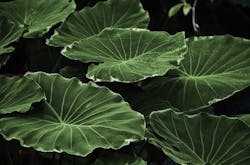About the author:
Dr. Laura Haupert is director of research at development for OMI. Haupert can be reached at [email protected].
Aimed to convert wastewater into effluent, the process of wastewater treatment is one of the most common forms of pollution control in the U.S. However, the impact various production processes have on the environment makes wastewater treatment a frequent talking point in legislatures across the country.
Odor control is one evolving element of the treatment process. The prevalence of odor emissions surrounding plants, treatment facilities, landfills and other sites is a concern to public works directors and the communities they serve.
Controlling wastewater odors is one of the most challenging aspects of its treatment. Some facilities see mixed results from multimillion-dollar ventilation system installations, while many others use masking scents that only provide a temporary cover-up for troubling smells.
Facilities that implement a safe, natural and effective odor control program make their concern for the environment, their works and their neighbors known.
Odor production has many characteristics—including concentration, molecular weight and composition—that contribute to whether or not it is detectable. Because of these characteristics, not all wastewater treatment odors are created equal. Common lingering odors such as rotten eggs, ammonia, garlic or earthly smells are caused by hydrogen sulfide (H2S), amines, sulfur dioxide, skatoles, indoles and mercaptans. This diverse range of smells and odor sources calls for a variety of control methods.
Plant-based industrial odor removal products such as Ecosorb are designed to tackle these wastewater treatment odors.
Mode of Operation
Plant-based odor control solutions are quite complex. They operate through the use of weak electrostatic bonding, gas phase solubility and acid base reactions. The plant-based solutions are applied through a variety of methods to eliminate odors.
Ecosorb operates as a plant-based emulsion. It often is diluted with water and applied via atomization using an Ecosorb odor control system. The mix in these droplets separates with the oils, forming a thin film over the water droplet itself.
Although the water droplet is quite minute, it still is large enough to capture the malodor molecules and affect the neutralization process. Ecosorb remains airborne until the droplet saturates and falls to the ground.
The plant-based product solves malodor problems in wastewater treatment using odor control chemistry distributed through a specially designed feed system. It is a broad-spectrum odor control product that is scientifically formulated and proven to react with odorous gases. Outdoors, it captures and prevents malodors from traveling to surrounding areas.
Methods of Dispersal
The delivery methods of plant-based odor control solutions provide a variety of benefits to the facilities they serve. These odor control solutions are more flexible, versatile and cost-effective than more capital-intensive odor control methods. To combat the different characteristics of odors, Ecosorb can be dispersed in a variety of methods.
Atomization. Through the process of atomization, a concentrated odor-eliminating solution is mixed with water to form droplets that are applied through nozzles to areas affected by odor. After the droplets are sprayed into the air, they neutralize odor molecules on contact. Atomization is used against malodors for many industrial processes and materials-handling applications.
The level of control atomization nozzle systems provide is their major advantage. Depending on the system design, the product volume, surface area and spray method all can be set. These systems come in a variety of formats, including:
• Explosion-proof systems;
• High-pressure atomization systems;
• Air atomization systems;
• Fan atomization systems; and
• Custom-designed systems.
Ecosorb can be atomized through hydraulic high-pressure or pneumatic low-pressure systems. High-pressure systems treat odors by dispersing a fine mist into the air to treat escaping gas emissions and surface odors.
For smaller areas, or for environments with multiple odor areas, low-pressure fan systems spray the mix of odor control solution and water through the fan’s jet stream, creating a fine mist over a wide area.
Vaporization. Unlike atomization, no added water is used in vaporization. When used with vaporizing equipment, odor control products are pumped through a perforated pipe distribution system to create a dry vapor that bonds with gasses to neutralize airborne orders.
OMI Vapor Phase systems can deliver dry vapor at rates from as low as 130 cu ft per minute (cfm) to as high as 2,400 cfm. This makes the delivery rate adaptable to many different locations and applications, even in freezing temperatures. Because there is no need for added water, vaporization allows for cost savings, water conservation and a more eco-friendly delivery method.
The Crystal Lake Wastewater Treatment Plant in Crystal Lake, Ill., used five of thse systems to help eliminate odor around the plant. Specifically, the plant uses one 130-cfm, one 250-cfm and three 450-cfm Vapor Phase units to control odors from wastewater, biosolids, hydrogen sulfide, sulfur dioxide, ammonia, ethyl mercaptan and methyl mercaptan.
Spray gel. A special formulation of odor-removing gel can be sprayed on odorous material, blocking those odors from escaping. Spray gel is a suitable odor control solution for:
• Sludge handling and transportation;
• Open-bed waste trucks;
• Working faces of landfills;
• Soil remediation projects; and
• Solid and semi-solid materials that continuously emit odors.
The Ecosorb spray gel is earth-friendly and safely eliminates offensive industrial odors. A range of systems are available to evenly spray semi-liquid material over odorous materials in trucks, in storage sheds and around landfills, or as they are released from machinery such as tillers and graders.
Applying the Solution
With multiple dissemination methods and essential oil-like properties, plant-based odor control solutions are suitable for multiple odor problem areas in wastewater treatment facilities. Headworks, clarifiers, sedimentation basins, lift stations, lagoons, biosolids treatment, industrial wastewater and wastewater septage dumping are areas in wastewater treatment that can benefit from this kind of odor control.
Odors associated with these processes include H2S, ammonia, sulfur dioxide, skatoles, mercaptans, amines and indoles, all of which can be remedied through vaporization, atomization or spray gel delivery methods.
Headworks & primary treatment.Hydrogen sulfide odor is a serious issue in wastewater treatment plants. Vapor or fan systems installed at the bar screens and digesters solve the problem. In some cases, the biochemical can be diluted with plant water for more cost-effective operations.
Activated biosolids basins. Because basins for activated biosolids can be large and uncovered, smells are free
to drift into nearby areas. Custom biochemical delivery systems can be developed to neutralize odors in a natural way.
Industrial wastewater plants. Many industrial facilities have their own wastewater treatment plants. There are two types of odors in these areas: smells generated from processed materials and those emanating from wastewater lagoons. Ecosorb products are approved for use outside of industrial processing pants to neutralize odors.
Wastewater septage dumping. Raw septage from haulers can present odor problems to plants that otherwise have their industrial emissions under control. Fan or nozzle atomization systems placed near the unloading point and vented or open downstream locations from them provide effective odor removal.
Conclusion
The ways wastewater is treated and redistributed into rivers and streams always will be scrutinized by the government and the public. For municipal and industrial wastewater facilities to control the various unpleasant odors created through their processes, biochemical solutions must be considered.
Independent laboratory studies have tested Ecosorb products for human toxicity against U.S. EPA guidelines. In all cases, the biochemical received the safest
possible classification, specifically in cases involving:
• Acute oral toxicity;
• Acute dermal toxicity;
• Acute inhalation toxicity;
• Primary eye irritation;
• Primary dermal irritation; and
• Dermal sensitization.
In addition to human testing, Ecosorb products were tested for fish toxicity to establish any potential problems from spillage or use in an exposed water stream. The U.S. EPA testing standards listed below prove Ecosorb to be non-toxic to marine life:
• EPA Method 72-2, Daphnia Magna;
• EPA Method 72-1, Fathead Minnow;
• EPA Method 72-1, Rainbow Trout;
• EPA Method 797-1300, Daphnia Magna;
• EPA Method 797-1400, Fathead Minnow; and
• EPA Method 797-1400, Rainbow Trout.
Each facility will have its own issues, but with a safe, natural and scientifically proven mode of operation and multiple methods of delivery, odor issues in wastewater facilities can be neutralized.
About the Author

Laura Haupert
Laura Haupert, Ph.D., is the chief scientific officer for Ecosorb, where she leads research and development, regulatory, safety, and quality control. She earned her B.S. in chemistry from Manchester College and Ph.D. in physical chemistry at Purdue University, working with bond energies of solvated clusters. Haupert also completed her post-doctoral research at Purdue where she focused on the development of mass spectrometric methods for the structural elucidation of lignin catalytic degradation. Haupert has developed and directed Ecosorb’s many product lines — and she has overseen the state-of-the-art laboratory and production facility in Rising Sun, Indiana — for over ten years.
